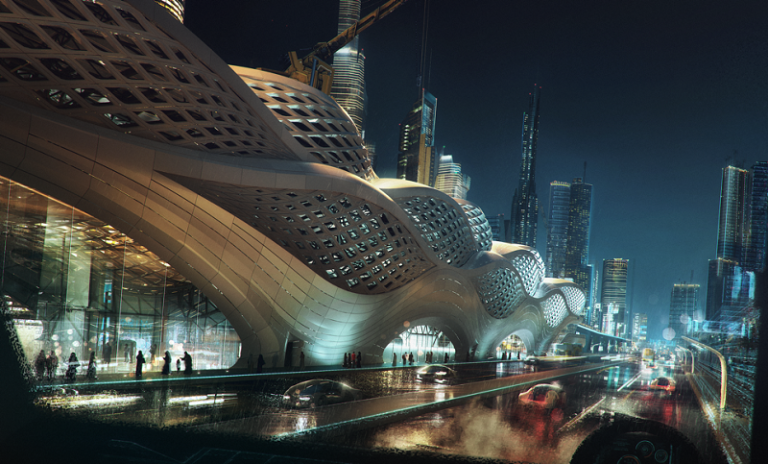The manufacturing industry has been benefiting from digitalization, robotics, and automation for several decades now; however, the construction industry seems to be only just picking up on DfMA (Design for Manufacture and Assembly) for repetitive mass production and standardized components. Andrew Watts, CEO at Newtecnic, has decided to discuss the construction industry’s move towards robotics and mass-customization that brings designers and makers together for positive disruption within and beyond the industry. Newtecnic uses Construction Labs where local skilled craftspeople, using locally sourced materials, deploy very advanced production machinery in temporary factories. The purpose of these small but efficient manufacturing cells is that they produce mass-customized components. For example, the King Abdullah Financial District (KAFD) Metro Hub in Riyadh, Saudi Arabia, was engineered by Newtecnic for maintenance by robots and future on-site component production very much in mind. “We are currently overseeing construction of the building envelope, and in this role, we examine and approve the work of several contractors ensuring the project is completed efficiently and accurately. Our remit also ensures that all building components and fabrications are quality assured before they are brought to site. This detailed and long-term overview allows us to future proof the building by design engineering for different types of current and envisaged developments of robots, drones, 3D printing and additive manufacturing, for decades of maintenance to come,” said Andrew. The KAFD Metro Hub has been designed so that inspection, monitoring and precise measurement of normally concealed areas behind panels and within the completed building’s fabric are executed by small flying Lidar and camera equipped drones and robots. High resolution building and system performance data collected this way can be shared with, and coupled to, on-site Construction Labs equipped with 3D printers that fabricate components that perfectly fit the structure. Another advantage of this way of working is that it provides an economic boost to the country or region where the building stands. It reduces imports, generates local employment and up-skilling, and cuts the environmental and financial costs of transportation. Also, rather than building a single purpose Design for Manufacture and Assembly factory, which requires years of operation to turn a profit, small flexible manufacturing assets are easy to scale through the building lifecycle. This means that the right equipment is always available to match current needs. Applying first principles, appropriate technology, and thinking of buildings not just as a kit of parts but as systems that can change, develop and adapt over time, their useful life can be extended while staying relevant for future generations. This can happen when good ideas and engaged, upskilled people combine with exciting technologies to make the construction industry more agile, environmentally positive and economically sustainable while producing aptly impressive buildings that enhance our cities and society.






